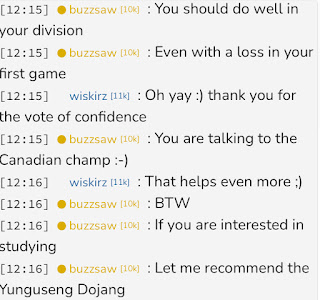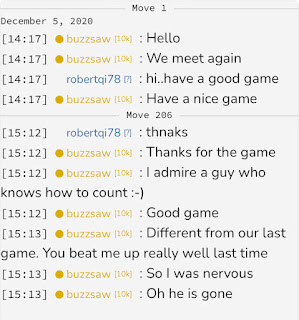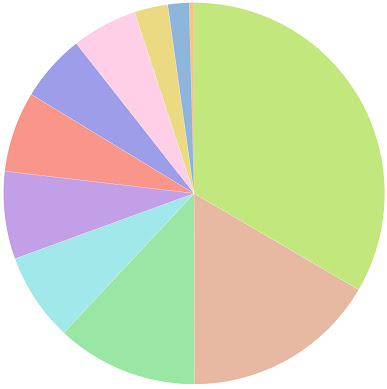I’m only four and a half days into my week so far, and in the past few days the color of my activities chart has dramatically changed.
The category “Twitch and YouTube” has taken up 42% of my time this week so far, and my total hours is approaching 20 while I still have two and a half days yet in my go week.
Why the sudden interest in Twitch and YouTube? I had been watching Shawn Ray, also known as Clossius, on his Twitch stream periodically over the past few months. I was not a frequent viewer though I have been a Patron of Shawn’s at the lowest level for the past eight months, and have enjoyed his content on Patreon. I think it would be fair to say that his focus is on double digit kyu ranked players. I like that because I feel as if I am not really a single digit kyu even though my AGA rank is a solid 9k, and my rated accounts on KGS are both 6k. I guess I shouldn’t take my 12k OGS rank so seriously.
But I digress.
A few days ago I decided to spend some of the time I might have spent streaming video for entertainment on Netflix or Hulu, and take that time to tune in again to Shawn’s Twitch stream. I had been playing a few moves in correspondence games on OGS when I saw a notice that Clossius was live on Twitch, so I thought, “What the heck. I’ll watch today.”
It turned out that Shawn was explaining the addition of a few new support tiers on Patreon. He had decided to add a new tier which includes two reviews per month. This appealed to me because I was already subscribed to the lowest tier for five dollars a month. An additional ten dollars a month would get me two reviews, so I decided to subscribe to the new tier to give it a try.
I’ve been playing eight games a week now for a few weeks, and intend to continue doing so moving forward. Two of my games will be reviewed in the Yunguseng Dojang starting next week. That leaves six games without review. As much as I enjoy reviewing my games with the OGS AI, and also with AI-Sensei, I much prefer human input, and I feel that I am missing out by not getting my games reviewed. That makes me less likely to play. I especially think it is important at my level to get the human touch in review because so much of what I see coming from AI leads me into paths that I don’t understand. For months I had been eyeing Shawn’s support tier on Patreon which included four game reviews a month for $25.00. It wasn’t the price that was holding me back, but the thought that picking a game each week for review would require a lot of effort to make the choice from among the games I had played. Signing up for two games a month seemed more manageable to me.
As it turned out, I signed up just before the end of the month. I had forgotten that Patreon charges at the beginning of the month. So if you ever decide to sign up you should do it in the first few days of a month. Because I will be charged again on the first, Shawn is giving me four reviews in January to get in the two reviews I paid for but didn’t have time to get in December.
I watched a good portion of Shawn’s stream two days this week, and am now working on reviewing the 25k Clossi Approach Videos. I am enjoying the explanation of cuts and reading to decide when to fix cuts. I look forward to my game reviews with Shawn and hope that they will help me build my fighting skills.






























































